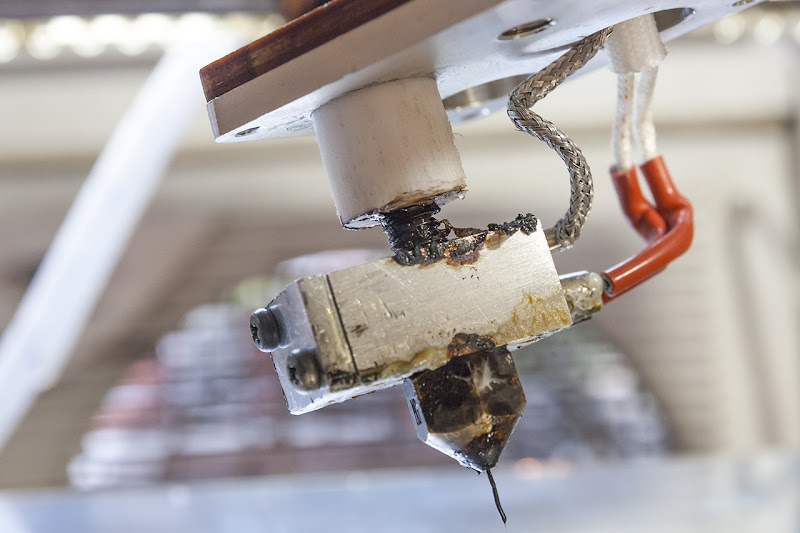Dear Joergen,
thanks for your reply, I can understand your concerns. Weakening the structure of the PFA tube by the heat inducted directly by a part of the copper tube is an issue that has to be considered. As you have already mentioned, the maximum working temperature of PFA is about 250-260° C (the melting point is about 305°) - that is below the maximum extruding temperatures I use. Apart from that I suspect the temperatures at the connected upper part of the copper tube to be always lower than in the nozzle area. Due to the direct connection of the copper and the PFA tube (what I see "per se" as a conceptual advantage of this design) I don't expect very heavy forces on the PFA tube from uplifting melted plastic, so even a structural weakened thread (by high temperature) should not fail. What could be done to improve the stability of the thread is to reduce the size of the drilled hole from 8 mm to the exact outer diameter of the PFA tube turned on the copper tube, ca. 7,5 mm, to give it a tight fit.
Refering to your concerns of breaking the PEEK insulator by reducing the length of the M6 thread I just can tell that this still makes a very stable impression on me.
Last but not least, let me explain my very pragmatic approach: I had a brandnew Ultimaker that did not work due to the known Bowden tube hot-end issues. I invested hours and hours and tried every workaround I found - without any sucess. I am sure that Taylors part would solve the problem, so I put my name on the list. But I don't know if or when I will receive it ...
Now I can use my Ultimaker without any problems. I did not have to invest a lot of time or money to realize this fix, and the only thing I risk is that the PFA tube will slip out again or the PEEK insulator might break earlier. So for me these are very good reasons to continue working with and testing this fix.
--
Christoph










Recommended Posts
joergen 2
I am not sure if that is such a good idea:
1. the bowden tube (PFA or PTFE) has a working limit of 250C. in the original setup, or with Taylors M7 threaded bowden, the bowden has only a small point of contact with the brass, and hence doesn't get hot over the working limit.
2. connecting the bowden for 6mm directly to the brass can heat it near to, or even above the working limit, weakening the M6 threads you carefully put in (the walls of the bowden tube become severely thinner in this process), and the connection will most likely disintegrate, sooner or later.
3. you limit how much brass/peek connection you have, further weakening the mechanical stability of the system, to a point where even the threads of the peek can rip out. (peek has a limit of 300C, but if only 3 turns of threading holding the brass, it'll break sooner)
Link to post
Share on other sites